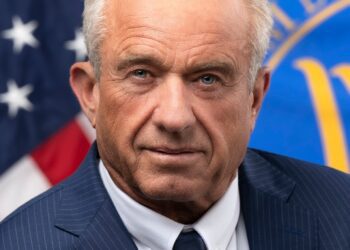It begins innocently. A wellness influencer with a soft aesthetic and 200,000 followers posts a reel about the dangers of fluoride in tap water. Another offers a “hormone-balancing smoothie” while explaining how birth control is toxic to the body. Then the algorithm steps in, pushing viewers down a path of deeper suspicion—anti-vaccine posts, anti-pharma conspiracy theories, and subtle nods to libertarian bio-sovereignty. Before long, digital health becomes less about evidence—and more about belief.
There is an increasing worry about misinformation with the increased popularity of health influencers, emphasizing a demand for accurate and evidence-based information. But how much of this is innocent misunderstanding, and how much is playing with uncertainty for political purposes?
To answer that, we must examine not just what is being said online, but why—and by whom.
The Rise of the Health Influencer Class
In a fragmented media landscape, health influencers now often function as primary sources of medical advice for millions of people. They merge entertainment, personal narrative, and wellness branding into a single potent stream of content that blurs the line between testimony and evidence. Unlike public health officials, their communication is emotional, personalized, and optimized for engagement.
The credibility they gain doesn’t stem from credentials—but from perceived relatability and aesthetic coherence. As platforms like TikTok and Instagram collapse the distance between expert and peer, authority is no longer conferred—it’s performed.
In theory, this democratization could be empowering. But in practice, it often leads to the amplification of misinformation, especially in spaces where scientific nuance is inconvenient, and where distrust of institutions is ripe for exploitation.
Honest Misunderstandings or Strategic Mistrust?
Some health misinformation is indeed the result of honest misunderstandings. Medical science is complex, evolving, and sometimes contradictory. It’s easy for non-experts to conflate correlation with causation or mistake anecdotal evidence for universal truth.
Take, for instance, the concept of “detox.” There is no scientific consensus that detox diets or supplements rid the body of toxins in any meaningful way. Yet influencers continue to promote these methods—often because they misunderstand metabolic processes or over-interpret small-scale studies. In these cases, the damage is real, but the intent may not be malicious.
But not all misinformation is benign.
There is a growing cohort of digital actors who use the language of wellness and self-care to intentionally stoke skepticism about public health measures, including vaccines, medications, and preventive care. What appears at first glance to be holistic lifestyle advice often morphs into a coded critique of mainstream medicine, regulatory institutions, and governmental authority.
As the Media and Health Advocacy (MAHA) coalition has documented, health misinformation is often used as a vehicle for broader ideological messaging, particularly around personal freedom, bodily autonomy, and anti-government sentiment. MAHA’s 2024 report notes that platforms once used to discuss nutrition and exercise have become “entry points into radical health populism,” where distrust of “Big Pharma” is tied to political identity, and wellness becomes a proxy for resistance.
Weaponizing Uncertainty
What makes health misinformation uniquely powerful is its ability to weaponize uncertainty—a reality inherent to all scientific inquiry. Medicine is probabilistic, not absolute. Treatments carry risks. Guidelines evolve. Bad actors exploit these ambiguities to sow doubt, using rhetorical sleights of hand like:
- “They don’t want you to know this…”
- “Ask why they’re censoring alternative cures…”
- “This isn’t medical advice, just what worked for me…”
This ambiguity allows them to evade accountability while creating distrust, especially among audiences already skeptical of institutional narratives.
Platforms, too, play a complicating role. Algorithms are designed not to elevate truth, but to amplify engagement, which often rewards emotional content over measured discourse. The more controversial the claim, the more likely it is to go viral.
From Personal Health to Political Identity
What’s striking about contemporary health misinformation is that it’s no longer just about health. It’s about identity. As MAHA researchers note, influencers increasingly tie wellness practices to broader worldviews—anti-authoritarianism, spiritual enlightenment, even resistance to globalization.
This was visible during the COVID-19 pandemic, when anti-vaccine rhetoric frequently overlapped with conspiracy theories about government surveillance, digital ID systems, and population control. It’s also evident in the anti-medication movements—especially around antidepressants and hormonal therapies—where influencers position themselves as guardians of “natural truth” against a corrupt medical-industrial complex.
These narratives tap into deep-seated fears and unmet emotional needs, particularly in populations who feel alienated by the traditional healthcare system. In this way, misinformation becomes not just a product of content, but a symptom of cultural alienation.
The Blurred Line Between Commerce and Ideology
Compounding the issue is the fact that misinformation is profitable. Many influencers who criticize pharmaceuticals simultaneously promote alternative health products—supplements, detox kits, biohacking devices—often through affiliate links or branded partnerships.
This creates a conflict of interest that’s rarely disclosed and almost never regulated. The commodification of mistrust enables misinformation to function as both ideology and income stream.
As MAHA and other watchdogs have argued, tech platforms must be held to higher standards of transparency, and influencers should be subject to stricter advertising disclosures, particularly when making health claims.
What Can Be Done?
Combating health misinformation requires more than fact-checking. It demands a rethinking of how public health communicates in the digital age. The CDC and WHO can’t compete with TikTok’s algorithm or an influencer’s relatability—but they can evolve.
- Empathy and narrative: Public health officials must adopt more emotionally resonant communication styles. Facts need to be embedded in stories, not bullet points.
- Partnership with credible creators: Collaborating with science communicators and digital educators who already have audience trust is more effective than issuing top-down mandates.
- Media literacy education: Teaching consumers—especially younger ones—how to evaluate sources, understand scientific nuance, and identify red flags is essential.
- Platform accountability: Algorithms must be redesigned to downrank content with unverified health claims. MAHA has called for third-party auditing of health content on social platforms, a proposal that merits broader support.
Conclusion: The Cure Is Cultural
Health misinformation isn’t just a glitch in the system—it’s a mirror reflecting a deeper problem: a public that feels unheard, a healthcare system that feels inaccessible, and a digital space where truth is whatever gets the most views.
Fixing this will require more than better science. It will require better storytelling, better regulation, and a shared commitment to rebuilding trust—not just in data, but in the institutions and people meant to protect public health.
Because if we don’t define what credible health communication looks like, someone else will. And they already have a platform.















